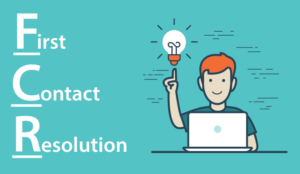Sebastian Reeve of Nuance discusses whether or not the UK is really getting worse at First Contact Resolution (FCR).
Ask UK consumers what matters to them when contacting an organization, and the most popular answer is getting their question or issue solved first time.
What’s more, the majority of UK organizations understand this, with 53% ranking first contact resolution (FCR) as the most important factor for a customer who’s reaching out to them.
UK customers and businesses agree: first contact resolution (FCR) is the key to great service experiences. So are UK brands really getting worse at FCR?
We dig into the latest research from ContactBabel and explore trends behind the figures, the difficulty of measuring FCR accurately, and the technologies which can help.
But these findings come from ContactBabel’s new report, The UK Customer Experience Decision-Makers’ Guide 2020-21 – a report which also features a retrospective look at FCR rates in the UK. This analysis shows (despite some pronounced statistical blips) a slow overall decline in the UK’s FCR rate, from a high of 80% in 2006, to a low of just 70% in 2020.
Which begs the question: if customers and organizations are united in seeing the value of FCR, why has it become less common over the last fifteen years? Are UK brands really getting worse at meeting customer needs first time? And if so, does this mean customer experience is suffering?
Appropriately enough, these aren’t quick or easy questions to answer. But they’re well worth diving into, because they show the importance of a sophisticated approach to measuring contact centre performance.
Why FCR Decline Isn’t Necessarily a Cause for Concern
At the turn of the century, if you’d wanted to know where your nearest branch was, and when it would be open, you might have rung the company’s contact centre to find out. This would have been a simple interaction for you and the agent you spoke to – giving a boost to the contact centre’s FCR rate.
Today, few of us would speak to that agent at all. We’d take out our phone, open the brand’s website, and we’d be on our way.
As self-service channels have become more sophisticated, customer behaviours have shifted. Greater use of websites, brand apps, virtual assistants, IVRs – even timely, proactive marketing communications – have taken a lot of the quick wins away from human agents.
Now, this is clearly good news for customer experience, and for customer service costs. But it’s also likely to reduce FCR rates within the contact centre. With self-service channels picking off the low-hanging customer intents, human agents see only the more complex, unique enquiries – for which there may be no standard immediate answer.
The fact is, when a brand makes smart use of channels like virtual assistants, they often see FCR drop, even as CSAT rises.
Why FCR Figures Should Often Be Treated With Caution
It’s worth noting that FCR has surged in popularity as a measure of CX over the last decade. When ContactBabel published its annual report ten years ago, only around half of UK contact centres actually measured FCR. In 2020, it’s the large majority.
If some UK brands have been slow to track this key metric, it’s probably for good reason. Historically, FCR has been notoriously tough to measure. UK contact centres currently use a range of methods:
- Agent opinions – captured after the calls, through disposition codes
- Supervisor opinions – captured through call monitoring and scoring
- Customer opinions – captured by the agent, or through a post-call survey
- Issue tracking – to see if a customer’s issue gets reopened
- Analysing interactions – for example, applying speech analytics to call audio
Most of these approaches either fall down on objectivity and consistency, or place an extra burden on the customer. And the most robust, modern methods have yet to be adopted by the mainstream.
For example, contact centres using automated call analysis report that it’s the most effective way to calculate FCR. But 69% of ContactBabel’s respondents don’t yet use (or don’t know if they use) the technology.
Moving Towards Using Analytics to Understand – and Drive – First Contact Resolution
The opportunity to use analytics to better understand FCR is huge. For example, by applying speech analytics to customer calls, it’s possible to automatically identify dialogue such as “I called last week”, or to spot when the same customer is ringing up about the same product, or to connect various conversations across a fragmented journey.
And automation and analytics aren’t just ready to help contact centre leaders understand FCR – they’re ready to help drive it. As service agents spend more time on the complex customer enquiries that self-service channels can’t solve, analytics can improve their effectiveness.
Let’s take speech analytics as our example again. They can be used to identify agent skill gaps, allowing for targeted training and coaching – or to spot topics associated with long or repeat calls, so new agent scripts or service processes can be developed.
The Conclusion: A Complex Question, but a Clear Opportunity
The UK’s falling FCR rate may well reflect a broader shift towards self-service channels – but with so many different, limited methods of measuring FCR out there, it’s difficult to have great faith in the figures, and even harder to draw solid conclusions about the trends behind them.
The opportunity for UK contact centres, however, is clear. Customers value FCR above all other experience factors, and it’s likely your competitors are struggling to measure FCR effectively. If you’ve not already investigated how technologies like analytics can help, now is the time.
Author: Robyn Coppell
Published On: 20th Oct 2020 - Last modified: 27th Oct 2020
Read more about - Guest Blogs, Nuance





































